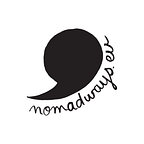Standing On Your Hands Is Not Such A Distant Idea
The moment you put your hands on the ground and bring your feet up the whole world ceases to exist… kind of. Because you feel like a child again, for whom there is nothing but what it does here and now. That’s what makes standing on hands more than just an acrobatic trick.
If we have nothing to do with acrobatics, circus arts or advanced yoga, standing on hands may seem to us a very distant idea. “Standing upside down? It is not possible for me!”. But the magic of this art is that it is available to most of the average athletic people, although to master it you need to start practicing.
Handstand — a school of patience
Sure, it is not easy to do a handstand. Mastering this skill requires patience, self-confidence and commitment. The learning process can take many months and progress only comes if we exercise regularly. Everyone has, of course, their own learning pace and each body works differently — some will learn faster, others will need more time. Regular training, however, is a must in any case if we want to someday do a handstand without the help of a wall or assistance. It’s a long way to go to master this skill, however, it’s an extraordinary journey, also the one deep into ourselves, and it should become a pleasure and a process that gives us joy.
Standing on your arms — a strong body
Standing on your arms is often seen as an exercise that you should physically prepare for weeks before to gain strength in your arms and core. Of course, exercising is rarely a bad idea, but the best thing you can do in order to get stronger for handstand is… starting to do handstands themselves! Just trying to turn upside down increases body awareness and strengthens it, even if we can’t clearly see it. Our arms, belly muscles and back become stronger, we begin to feel the muscles we have never used before and work with them more consciously.
It is very important to start training handstands when you already know the basics and the general principles of working with the body in this position. It is worth to join a few classes or workshops with professionals. Having the right foundations, you will avoid making mistakes from the very beginning and the later problem of eradicating them from our practice. Correct body positioning, muscle tension and feeling the balance are very important elements.
Handstand — perfect re-set
We like to do sports because they distract us from everyday life and are a form of meditation in motion. We are not always aware of this, but our mind really rests when we do physical exercises. Standing on our arms is so physically and mentally engaging that it leaves us no space to think about anything other than the movement we are currently doing. It is exciting and provides the perfect reset after a hard day. And satisfaction from the training gives a lot to our general mindset, especially when we start to notice the effects of our hard work.Learning handstands increases confidence and belief in your own abilities. It requires effort and regular training, so if we achieve at least part of what we are ultimately striving for, we should be glad that we have come this far. And getting to one point only increases your hunger for getting to the next, assuming, of course, that you won’t be discouraged after a few weeks. If we finally manage to do a handstand, or any other difficult physical ability we’re working on, which are reserved only for the most persistent ones, we will believe in our own strength, as well as our own ability to cope with difficult situations and acquire difficult skills — not only in the gym, but also in everyday life.
Standing on your hands — it’s healthy*!
By turning upside down — whether by doing headstands, forearmstands or handstands — and thus carrying the weight of our own body, we strengthen the bones, protecting them from osteoporosis, increase blood supply and oxygenation of the upper body parts. Our sense of balance improves, the strength of the arms and body increases. *However, this is not an exercise for people who have serious health problems, including heart problems, high blood pressure, eye diseases, previously suffered back injuries, stroke or have problems with the joints of the upper body. That is why it is worth talking to the doctor if we have doubts whether turning upside down is a good idea in our case.
Join our next workshop that is a great opportunity to start practicing with a professional. AcroConnection in happening in France, 17–30 June 2020. Read more info and apply here before 29 February 2020.
About Nomadways
We craft international workshops for artists, educators and youth workers. Together we create pedagogical artwork, share and invent practical solutions to social problems.
- If you are interested in our work, subscribe to our monthly news. Or follow us on facebook, twitter and instagram.
- Join our community of artivists here.
This article is translated from www.hellozdrowie.pl, written by Marta Witecka, a handstand and yoga teacher (www.martawitecka.com).
If nothing stands on your way, start your own amazing adventure at www.handstandworks.com by Marta Witecka.
